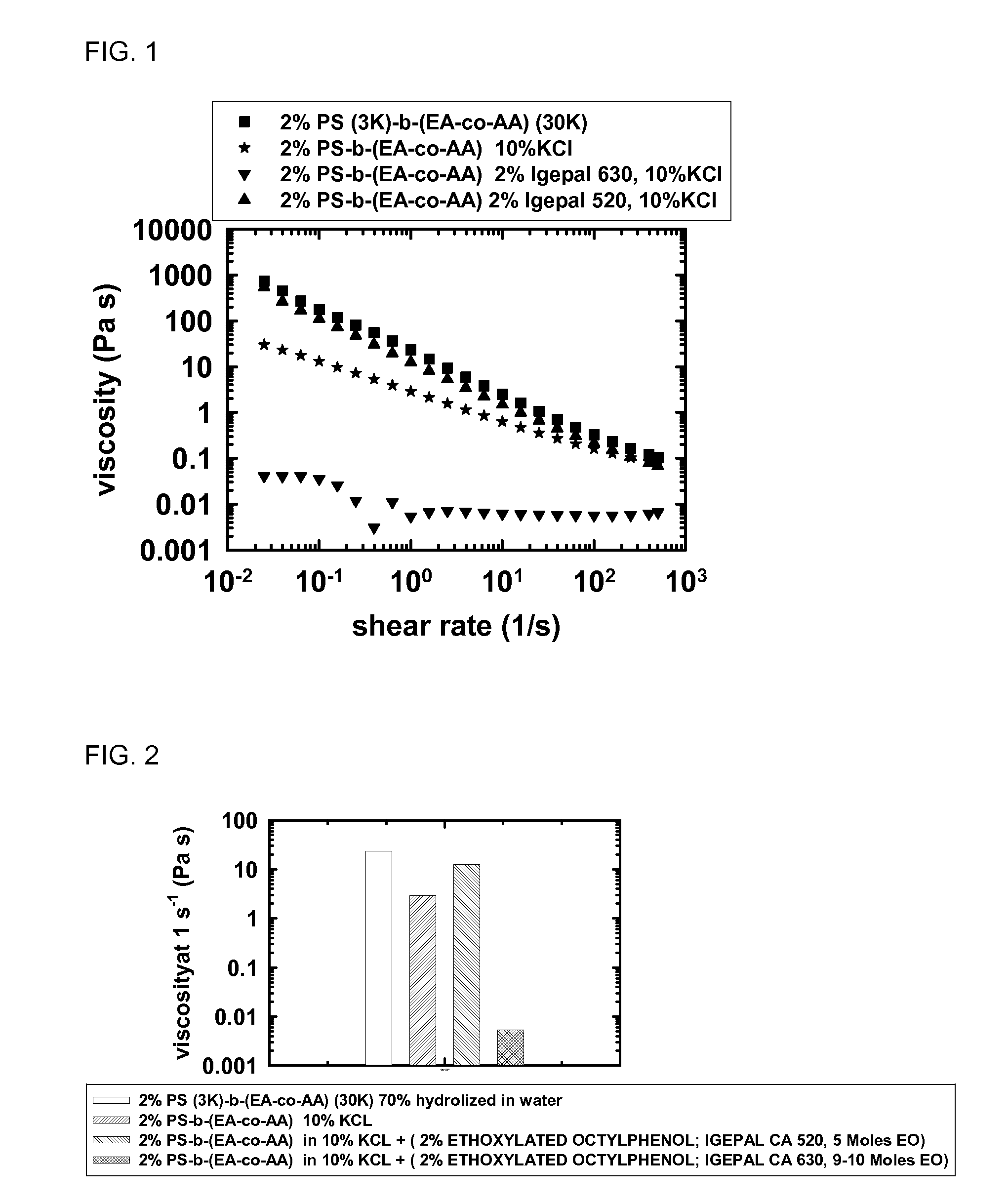Addition of nonionic surfactants to water soluble block copolymers to increase the stability of the copolymer in aqueous solutions containing salt and/or surfactants
a nonionic surfactant and copolymer technology, which is applied in the direction of chemistry apparatus and processes, wellbore/well accessories, etc., can solve the problems of low resistance of polyelectrolyte and hydrophobically modified polyelectrolyte polymers to salt, disadvantageous breakdown, and low viscosity and stability of these polymers, so as to protect or recover the viscosity and/or viscoelastic properties of water soluble poly
- Summary
- Abstract
- Description
- Claims
- Application Information
AI Technical Summary
Benefits of technology
Problems solved by technology
Method used
Image
Examples
examples
[0146]It is well known that the presence of salt breaks down the viscosity of polyelectrolytes. Thus, a first example tested if a nonionic surfactant could protect a PS-b-(EA-co-AA) diblock that is 70% hydrolyzed. The diblock was 3k polystyrene 30K EA-co-AA (30K ethylene acetate-co-acrylic acid).
[0147]A solution of water soluble polymer was diluted to the required value in water and mixed with high speed homogenizer (ULTRA TURRAX T-25) at a speed of 20000 rpm. The resulting viscosity and viscoelasticity were measured in an AR-G2 rheometer (TA instruments) with a 4 degree 40 mm cone and plate geometry. Electrolytes were added (typically 10 wt % KCl for these examples), mixed with high speed homogenizer and the resulting viscosity and viscoelasticity were measured. Nonionic surfactant additives were added and mixed with high speed homogenizer and the resulting viscosity was measured.
[0148]The viscoelasticity is built through the hydrophobic association of the ethyl acrylate (EA). This...
PUM
| Property | Measurement | Unit |
|---|---|---|
| weight % | aaaaa | aaaaa |
| aqueous | aaaaa | aaaaa |
| hydrophobic | aaaaa | aaaaa |
Abstract
Description
Claims
Application Information
 Login to View More
Login to View More - R&D
- Intellectual Property
- Life Sciences
- Materials
- Tech Scout
- Unparalleled Data Quality
- Higher Quality Content
- 60% Fewer Hallucinations
Browse by: Latest US Patents, China's latest patents, Technical Efficacy Thesaurus, Application Domain, Technology Topic, Popular Technical Reports.
© 2025 PatSnap. All rights reserved.Legal|Privacy policy|Modern Slavery Act Transparency Statement|Sitemap|About US| Contact US: help@patsnap.com

